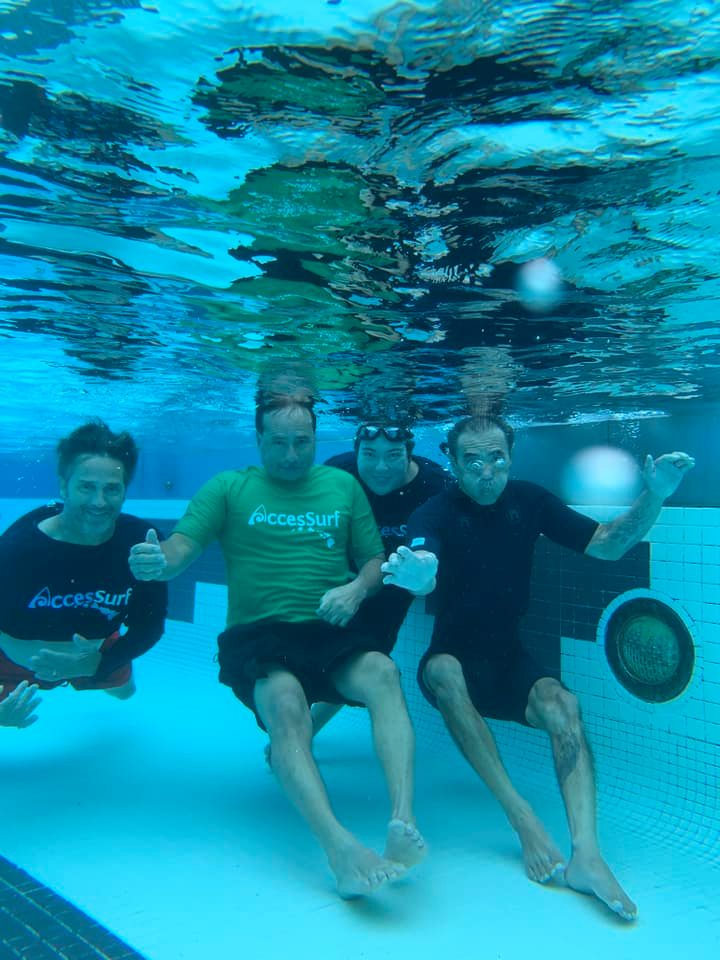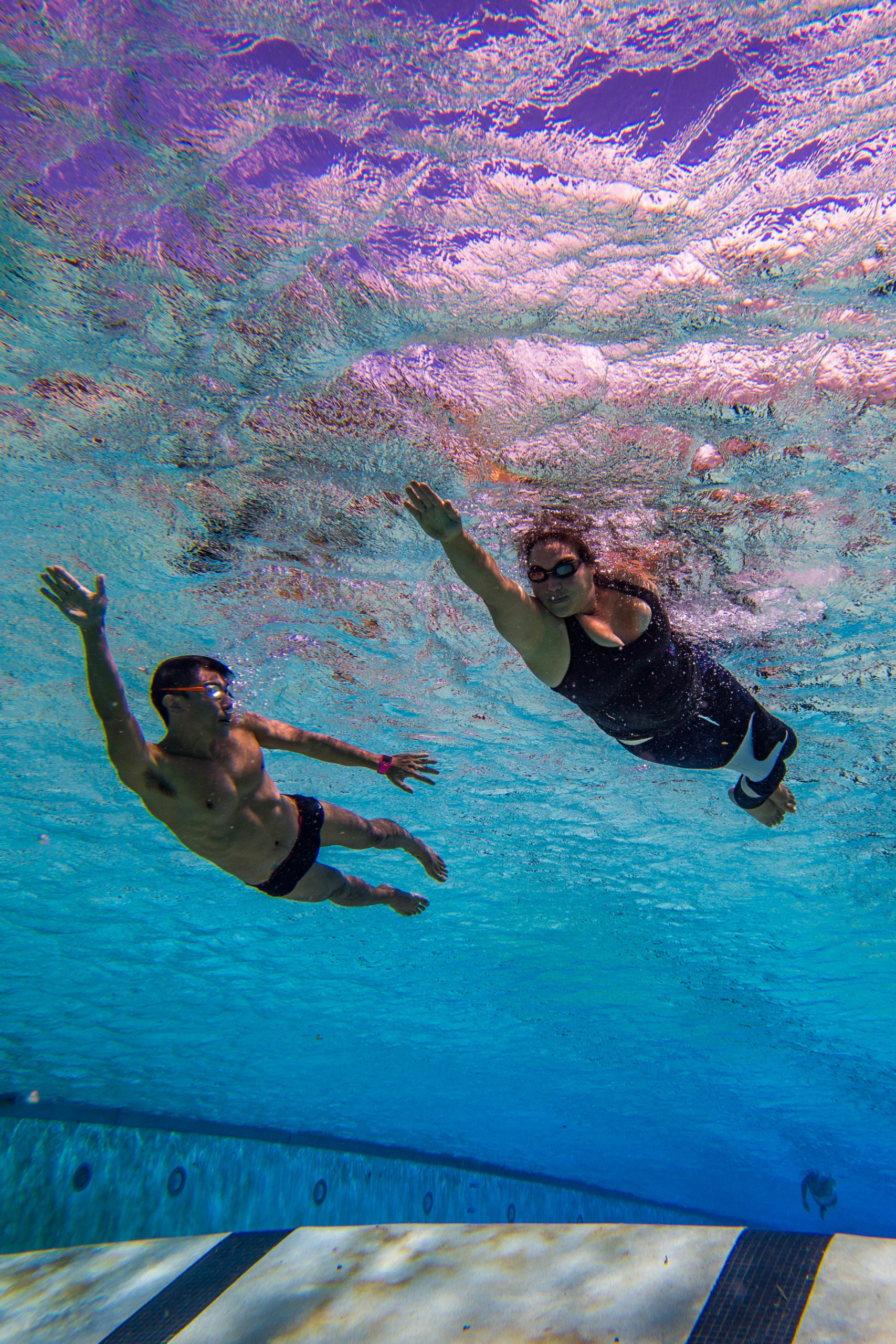
- Adaptive swimming is one of the oldest adaptive sports. There is a range of levels in the sport, and it has been included in the Paralympics since the 1960 Summer Games. AccesSurf has quarterly swim clinics and swim experiences at all of our larger events.
- Swimmers are classified according to the type and extent of their disability. The classification system allows swimmers to compete against others with a similar level of function.
- Access to adaptive swimming can range from adapting the environment, personal factors, and equipment modifications. At our clinics, we provide body floats and weights for buoyancy. We also have a variety of equipment to assist a person in a range of swimming techniques.
Main factors in swimming include the AccesSwimmer’s:
- Cognition
- Comfort in the water
- Comfort with touch and pressure changes
- Ability to stay afloat and recover from submersion
- Reliable airway and breathing
- Temperature regulation

The head coach and staff at AccesSurf meet individuals where they are at in learning how to swim. We support accessible swimming though modification of environments, swim technique, and personal factors. Here are some ideas of where to start on different skill levels.
Beginner Skills
- Pool entry and exit
- Basic water safety/competency
- Independent swimming skills
- Adaptive stroke techniques
- Balance and core strength
- Introduction to adaptive equipment
Intermediate Skills
- Understanding different strokes (breast stroke, free style, side strokes, back stroke)
- Breath holds
- Kick techniques
- Treading water
- Independent forward movement (prone and supine)
- Comfort in water
- Customizing adaptive equipment
Advanced Skills
- Power, strength, endurance, and speed with all stroke techniques
- Mindfulness
- Muscle memory
- Performance training
- Challenging environments
- Utilizing adaptive equipment for performance
Information on elite swimming for adaptive athletes can be found here.

